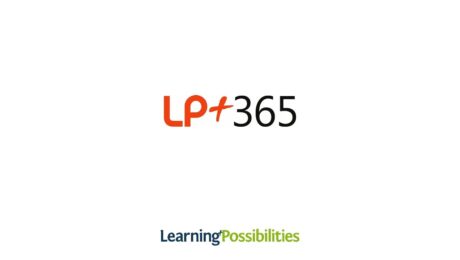CV2: School is closed. Now what…?
Another week of the COVID 19 virus has passed and for many teachers, and employees, remote teaching/working is now a reality, and likely to stay for the long(er) term.
Many schools and universities are desperately applying ‘sticking plaster’ to their hastily compiled remote learning strategies with a mixture of free digital services and content. Whilst this may do the job until schools reopen, the #CoronaVirus should be a wakeup call as it continues to demonstrate our vulnerabilities.
Once schools return, many Heads will start looking at long term solutions. Whilst there are many free digital solutions on the market (#Microsoft #Office365, #Google #Classroom etc.), there is a need in schools for wider considerations.
It thought it would be useful to list my top five below.
1. Data Security
Security of learner data is paramount, regardless of the solution. Wherever your data come from (SIS, MIS, LIS, spreadsheets, databases etc), it needs to work seamlessly with your digital platforms, providing learners with correct access to classes and the right user privileges. Equally important is where your platform data is stored. Do you know who has access to it? Can it be used by others for marketing or advertising? Does it meet legal and other security requirements?
2. Which platform should I choose?
There are many digital platforms, it is important to pick the right one. Distance teaching and learning is one of many potential uses. Content management, assignments, collaborative projects, testing and communications are some of the many functions of a good integrated platform. It should also consider local needs with multiple languages, interfaces for different ages, strategies for poor connectivity (or offline learning) and ease of use for the teacher. It’s important to build CPD strategies and develop areas that are important to your school and appropriate for your infrastructure.
3. Efficacy
Until the Corona Virus outbreak shut schools, remote teaching (in most schools) had been largely a theoretical phenomenon. Schools saw clear benefits in learners accessing work from home, submitting assignments or contributing to projects, but these were largely supplemental to the work that happened in class. A good solution must have proven efficacy, be easy to use and give the teacher a range of tools to suit different teaching styles. This will encourage both platform adoption and skilling-up for teachers.
4. Stakeholders
Apart from the teachers and learners, there are many other important stakeholders. Direction from the leadership is critical for any digital project to succeed, let alone one that needs fundamental change management. This should be at government, regional and school level. Equally important is the training and support teachers receive, as well as the availability of devices and connectivity.
5. Hurdles
In my experience, all digital projects face similar hurdles. Policy funding is usually critical, as it an understanding of ongoing funding requirements. Likewise there has always been unjustified fear that technology will replace teachers.
At this time, many schools are focused on completing the academic year with whatever resources and platforms they can use. That is important. But in the longer term, a clear strategy and plan will be invaluable.
The author is Founder and CEO of #EdTech business Learning Possibilities which provides the #LP+365 platform. Please contact us if you need advice, help or support.
- Published in Blog
CV1: Is there a silver edu-lining to the Corona Virus?
Italy’s announcement to close its schools won’t be the last. Schools in other countries are also closed as the virus gets a firm grip on everything from travel to sport to medicine supply.
Coronavirus: Italy to close all schools as deaths rise
Over the past two decades education reformists have had visions of self paced learning, online collaboration and enabling meaningful learning outside school. All attempts so far have struggled because the exam systems rarely look for these skills and teaching to the test is still the norm in many parts of the world.
It is well known that digital both engages learners and provides skills necessary for employment. However connectivity, devices and classroom management all pose real world challenges.
This vision will now have to finally become a reality. The virus is here to stay, and schools will have to quickly learn to distribute resources, teach and manage online assignments, and collaborate/communicate digitally. Whether this is through free tools provided by Google and Microsoft, or more structured platforms such as LP+365, the reality is that schools will have to become like workplaces, many of whom have also asked employees to work from home.
- Published in Blog
EdTech 101 Part 3 – For Our Tomorrows by Mehool Sanghrajka
There is no doubt that education is going through a transformation. The need for digital skills for employment and the changing nature of work are certainly key drivers.
However, the disparity between developed and developing worlds, the availability of devices and connectivity, and the culture and beliefs of individual countries are all important considerations.
In this mix, I frequently hear EdTech Gurus talk about personalisation and collaboration. Is this utopia or are they goals that will be adopted globally? More importantly, are there clear trends that we can draw upon for the future of EdTech?
Is EdTech free?
Many large corporates in EdTech currently see the sector as an investment or a CSR opportunity. This means there is little money to be made here and as a consequence, the activities are usually limited to selling enterprise or consumer software at discounted prices. If EdTech is to become a thriving market in its own right, then two fundamental things clearly have to happen; it needs to become a key part of the teaching and learning process, and it’s funding needs to become as essential as buying desks and chairs.
School exams are here to stay
The exam system determines how schools work. Period. It’s the way learners progress and comprehension is measured, the way school performance is measured and sometimes how school/college leaders are rewarded. Exams are here to stay, and possibly for the long term as changing them requires wholesale changes and training to the education workforce. Often EdTech is not required for these exams and many still use the model of learners sitting alone writing answers from memory. In this climate, it is critical that EdTech strategies are clear about how they support this model.
Skills are essential
A recent IDC study listed the skills required by employers in their job adverts. Not surprisingly, the top 10 were all digital skills that learners would only develop through the use of technology to produce work, collaborate and communicate. With a self-disciplined approach and out-of-the-box thinking thrown in for good measure. There was a time when demonstrating the ability to pass exams by memorising knowledge was essential for the job market. That is no longer the case and as employers push for skills, education will need to adapt. We have already helped one government with a digital competency framework, which defines and measures learner proficiency at each key stage. This may become the answer as it sits comfortably alongside the current exam system.
Learning is lifelong
Learning, not knowledge is the key skill for the coming years says Learning Possibilities Chair, Prof Stephen Heppell. As we move into a world changing at an ever faster pace, the ability to learn at every stage of life will become essential, even if it is to just stay current. Most learning, post-formal education, is through technology as is the vast amounts of knowledge in sites like Wikipedia. Navigating these, but also learning to love learning, will become a key part of school life.
- Published in Articles, Uncategorized
EdTech 101 Part 2 – Education Technology is the Answer
In my last blog, I looked at how the education industry was unique, complex and unlike other ‘corporate’ markets. In this blog, I look at how EdTech is the answer to transforming education, but perhaps not as it is currently.
EdTech has the power to transform technology, but only if it’s adopted. The education system is undergoing this process as the need to encourage digital skills, engage learners and drive employability gains momentum. Adoption is the key.
You don’t need the “M”
LMS, or Learning Management System/solution is the title given to almost all EdTech platforms. Many come and go, and few achieve any scale. These platforms have a common characteristic; they manage the process of teaching and learning. Often created by technologists with little experience of schools, they often focus on automating the teaching process by following sequences or steps. In the corporate world, this drives productivity and cost-saving. In education, not only does this limit the teachers’ pedagogical approach, It requires a large investment in teacher training. Not surprisingly, many LMS end up being little more than document repositories or filing systems with relatively low adoption. Flexibility is the key, in both usage models and pedagogical approaches.
Start with the problem, not with the technology
Often I see EdTech founders keen to improve education and excited about introducing a new technology. This could be artificial intelligence, robotics or even student voice solutions.
The reality is that educational institutions face a number of challenges; connectivity, device shortages, low levels of technology support staff, and teacher-time to name a few. EdTech founders need to understand both the problems they are addressing as well as the efficacy of their solution. Often this needs to be through proper academic studies if teachers are to believe and invest time in the technology.
It needs scale, needs to be secure and also affordable
Governments have limited funds and often EdTech is low on the priority list, particularly as it is still possible to pass exams well without the need for technology. Many large companies have ‘education pricing’ strategies for their corporate/consumer solutions with discounts of 80% and more. Yet any solution, for large scale deployment, needs to have scale and security, which costs a great deal of money. Having a strategy to address this, whilst being affordable is a key design criterion that EdTech companies ignore at their peril.
You need an adoption strategy
So you have a large government contract and a deployment plan. Great. The key to getting ongoing business is adoption. Will teachers use the solution? The graveyard of failed EdTech solutions is vast. Adoption begins with product design and usage strategies, not with training. We were so convinced that this was the key to a successful EdTech business, we published our strategy – ADOPT (an acronym for our 5 stages of e-maturity: Awareness, Development, Optimisation, Pioneering and Transformation). It went on to become the UK’s national e-maturity framework and the foundation for all our solution development.
Combined with the uniqueness of the education marketplace (see last blog) these four considerations make EdTech truly distinctive. These characteristics are commonplace in those who succeed in the education world, however, I suspect that many of you will be wondering if this is just too difficult? The answer for Learning Possibilities has been the dual benefits of being a growing business and the satisfaction of seeing a large number of learners gain improved education outcomes.
In the next blog, I look at the current trends in education and how they will dictate future EdTech marketplaces.
- Published in Articles, Uncategorized
EdTech 101 Part 1 – The Uniqueness of Education by Mehool Sanghrajka
Dr Mehool Sanghrajka is the Founder and CEO of Learning Possibilities. He has been working at the forefront of education for 20 years.
————
I often get asked to talk to EdTech start-ups about how they should approach the market to become successful long term players. I have finally got around to writing the no-nonsense blog on success in EdTech that I promised many of them.
This three part series, will be published over the next few weeks, looking at the different aspects of the education marketplace and the factors that often lead to success.
The Uniqueness of Education
For many decades, EdTech has be touted as the answer in reforming education. For two decades ‘21st Century Skills’ have been paraded as the answer to the growing skills gap between school/college leavers and employers. Yet there are few success stories in EdTech. The problems in education are complex, as are the solutions.
New entrants to the EdTech market often confuse it with the corporate or wider public sector markets and assume good technology will rapidly gain momentum.
Understanding and navigating the nuances (highlighted below) of the education market is the key to finding a viable and adoptable solution.
Think…Slow Down!: everything in Education moves slowly.
I often laugh at the phrase ‘Education is a get rich slow business’, and it’s usually true.
Education around the world is broadly split into fee-paying and (state or central) government institutions. Both have unique characteristics, but the key differential is scale. In almost every country, learners in government institutions far outnumber, by several multiples, those in fee-paying institutions. In addition, governments usually buy for large number of schools where as fee paying institutions are usually alone or grouped in small numbers.
The other EdTech market is the consumer or parent. Studies show that parents engagement helps their children’s academic success. Here the challenges are different; alignment with curriculum and school teaching, marketing strategies to reach target parents, and competing with free products like Khan Academy.
If you want (or need) scale, then understanding government purchasing cycles is the key. These cycles can be multi-year and sometimes be part of a wider national vision to build a knowledge or digital economy. Procurement may involve public tenders or strict funding criteria. Learning to navigate these needs to be an essential part of any EdTech strategy.
Governments buy, teachers teach and students learn
In the corporate world, purchasing decisions are usually through a purchasing department and often related to a productivity or cost-saving ROI (return on investment) measure. Education is different. Teachers are overworked and therefore saving costs is not their priority. Further asking time-poor teachers to invest time in learning technology solutions is usually difficult when it’s frequently possible to pass exams well without access to specific learning technology. We focus our strategy on meeting government strategies, whilst having firm plans to engage with teachers and drive learning outcomes for learners.
Buying happens only within academic calendar windows
Unlike the corporate world, schools operate within the boundaries of school terms and holidays. This defines when purchasing activities, pilots and project rollouts can happen. It also determines when related (but separate) items such as devices and connectivity may be bought.
Understanding the rhythm of the education calendar is vital, as is being part of the annual cycle of exhibitions and conferences. We set our annual calendar and plan our sales campaigns and customer pilots around school terms.
Schools don’t like variable costs
Today having a scaleable solution often means some form of cloud service. These are usually ‘pay-as-you-use’ services, which means incurring variable costs, sometimes with little ability to control teacher or learner usage or behaviour. This model is also contraindicative, as good usage means higher cloud consumption costs.
Government customers usually only work on predictable fixed costs, that they can budget. Having strategies to manage variable costs is usually necessary for global reach.
Students change class every year
As all parents know, children change classes every year. This makes student identity management and data security complex, yet critical. Teachers changes classes and schools many times in their education career. Managing this is more complicated than standard corporate implementations where user change or turnover is low.
In the next blog, I will look at how EdTech is the answer to transforming education, but perhaps not as it is currently.
- Published in Articles, Uncategorized
Why LP+365 is not an LMS?
For many years, the terms Learning Management Systems (LMS) and Virtual Learning Environments (VLE) have been applied to almost all platforms in schools. We’ve built LP+365 to be different. With over 400m learners having access to #Office365 we believed it was essential to have a learning and collaboration platform that fully exploits the power of Office 365, yet was simple enough to learn within 20 minutes.
LP+365 is not an LMS. Traditional LMS are designed to deliver education courses, or support the teacher in delivering material to students. This usually means the LMS is process driven, often rigid and incompatible with modern pedagogies. Teachers usually require a lot of training and professional development, and many of these platforms are used as little more than glamorised document libraries.
LP+365 is different, it is a Learning and Collaboration Platform (LCP). A simple set of dashboards that presents all the functionality and apps within Office 365 that are proven to have efficacy in an education environment. Usage of these tools has been further simplified by having one-click tiles and an intuitive user interface. With the integration of our ‘one minute’ how-to videos and a full support site to drive adoption, LP+365 is a simple way for teachers to use Office 365 in the classroom thereby developing critical skills in learners.
LP+365 encapsulates a set of tools that are readily available at any time in any context, including the delivery of course material. The platform provides resource management tools, collaboration tools, communication tools, assignments, and analytics and administration tools. These can be used at any time in any context, supporting many pedagogical approaches.
With almost no limit on storage or types of content, the cloud based LP+365 App works on any browser, on any device on and offline.
With such a long history of LMS and VLE, why do we need a LCP? Research shows that students or learners who have strong collaboration and communication skills, as well as knowledge of Microsoft Office tools have a greater chance of employability. LP+365 seeks to give learners an experience of the modern working environment, whilst supporting many teaching and learning styles, and minimising the teacher’s training needs.
- Published in Articles, Uncategorized
- 1
- 2







